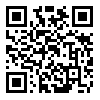Volume 9, Issue 1 (2023)
CJP 2023, 9(1): e16 |
Back to browse issues page
Download citation:
BibTeX | RIS | EndNote | Medlars | ProCite | Reference Manager | RefWorks
Send citation to:



BibTeX | RIS | EndNote | Medlars | ProCite | Reference Manager | RefWorks
Send citation to:
Riahi K, Najibi B, Razmara M. Efficacy of Intranasal Midazolam in Cessation of Hypercyanotic Spells in Children with Tetralogy of Fallot. CJP 2023; 9 (1) :16-16
URL: http://caspianjp.ir/article-1-183-en.html
URL: http://caspianjp.ir/article-1-183-en.html
Department of Pediatrics, Faculty of Medicine, Ahvaz Jundishapur university of Medical Sciences, Ahvaz, Iran. , razmara.m@ajums.ac.ir
Abstract: (1325 Views)
Background and Objective: Tetralogy of Fallot (TOF) is the most common form of cyanotic congenital heart disease. Hypercyanotic spells are one of the major complications of TOF which call for a prompt intervention to resolve hypoxic conditions. The aim of this study was to evaluate the effect of intranasal midazolam on the control of spells in children with hypercyanotic TOF.
Methods: This semi-experimental study was conducted on TOF children referring to the pediatric emergency department of Golestan Hospital, Ahvaz, Iran from April 2017 to February 2018. The children were knee-chest positioned by the mother, and if the spells were not resolved, 0.2 mg intranasal midazolam was introduced into the nasal cavity. Three minutes after the child’s recovery, measurement of heart rate and respiratory rate as well as pulse oximetry was done. Data were analyzed by SPSS version 17.
Findings: Of the 10 patients studied, 6 (60%) were boys and 4 (40%) were girls. The age of patients ranged from 6 months to 3.5 years. Sixty percent of the children were in recovery, 20% were crying, and 20% were fearful. Examination of before and after intervention showed that heart rate and respiratory rate were significantly reduced (P <0.001). There was a significant increase in arterial blood oxygen (P <0.001).
Conclusion: According to the results of this study, intranasal midazolam is effective and safe in controlling spells in patients with TOF.
Methods: This semi-experimental study was conducted on TOF children referring to the pediatric emergency department of Golestan Hospital, Ahvaz, Iran from April 2017 to February 2018. The children were knee-chest positioned by the mother, and if the spells were not resolved, 0.2 mg intranasal midazolam was introduced into the nasal cavity. Three minutes after the child’s recovery, measurement of heart rate and respiratory rate as well as pulse oximetry was done. Data were analyzed by SPSS version 17.
Findings: Of the 10 patients studied, 6 (60%) were boys and 4 (40%) were girls. The age of patients ranged from 6 months to 3.5 years. Sixty percent of the children were in recovery, 20% were crying, and 20% were fearful. Examination of before and after intervention showed that heart rate and respiratory rate were significantly reduced (P <0.001). There was a significant increase in arterial blood oxygen (P <0.001).
Conclusion: According to the results of this study, intranasal midazolam is effective and safe in controlling spells in patients with TOF.
Send email to the article author
| Rights and Permissions | |
 |
This work is licensed under a Creative Commons Attribution-NonCommercial 4.0 International License. |







